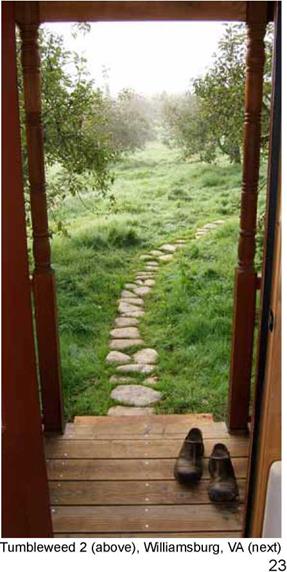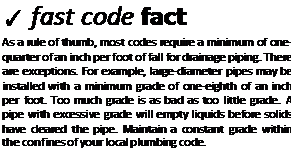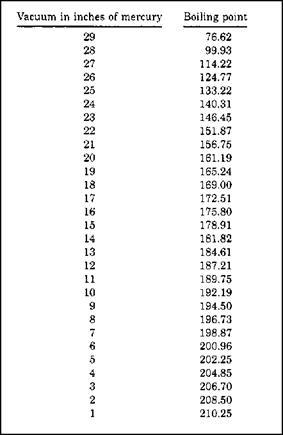Hazardous waste is regulated under the RCRA if more than 220 lb (100 kg) of hazardous waste is generated each month, as is the case in most bridge paint removal projects. RCRA defines the concentrations of a waste that should be considered hazardous and establishes procedures for handling and disposing of hazardous waste. Disposing of waste is the responsibility of the waste generator. The lead-based paint and blasting grit recovered in bridge paint removal projects may contain concentrations of lead sufficient to classify it as hazardous, waste in all instances, the owner of the structure is considered the generator (in some states the contractor removing the paint may be considered a cogenerator). Subtitle C under RCRA is relevant to lead removal activities. Table 1.11 provides a listing of the pertinent RCRA regulations.
Methods of testing wastes to determine whether the waste is hazardous are described in 40 CFR 261. Appendix II of that regulation describes the toxicity characteristic leaching procedure (TCLP, Method 1311) that must be used to analyze for hazardous constituents such as lead. Leachable levels of various elements that will establish waste as hazardous are found in Table 1 of 40 CFR 261.24 and are presented in Table 1.11. Wastes with any of the characteristics listed in Table 1.12 would be considered hazardous. For example,
|
TABLE 1.11 Pertinent Regulations of the Resource Conservation and Recovery Act (RCRA)
|
|
RCRA regulation
|
Description of regulation
|
|
40 CFR 260 40 CFR 262 40 CFR 261 40 CFR 268 40 CFR 263
|
Hazardous waste management system Standards applicable to generators of hazardous waste Identification and listing of hazardous waste Land disposal restrictions (land ban)
Standards applicable to transporters of hazardous waste
|
|
TABLE 1.12 RCRA Toxicity Characteristics and Waste Limits
|
|
RCRA waste number
|
Characteristic
|
Waste limit, ppm*
|
|
D001
|
Ignitability
|
|
|
D002
|
Corrosivity
|
pH<2; pH>12.5
|
|
D003
|
Reactivity
|
|
|
D004
|
Arsenic toxicity
|
5.0
|
|
D005
|
Barium toxicity
|
100.0
|
|
D006
|
Cadmium toxicity
|
1.0
|
|
D007
|
Chromium toxicity
|
5.0
|
|
D008
|
Lead toxicity
|
5.0
|
|
D009
|
Mercury toxicity
|
0.2
|
|
D010
|
Selenium toxicity
|
1.0
|
|
D011
|
Silver toxicity
|
5.0
|
|
*Corrosivity is measured in pH units.
Source: Based on Table 1 of 40 CFR 261.24.
|
using the TCLP testing method, if 5.0 mg/L or more of lead can be extracted from debris, the debris would be considered to be toxic and hazardous.
EPA regulates the amount of hazardous substances and waste that can be released into the environment under both CERCLA and SARA. Under these requirements, an owner is required to contain lead-based paint removed from a structure. A response could be initiated at a paint removal project if improper containment of dust or debris results in a release of lead to the environment. A reportable quantity of released leaded waste is 10 lb (4.5 kg). The report must be made to the National Response Center [(800) 424-8802] and to state and local regulatory authorities within 24 hours. The calculations presented in Table 1.13 demonstrate how to estimate the unit area of paint on a bridge surface that would equate to a reportable CERCLA release of lead.
CERLA and SARA regulations are found in 40 CPR 300 through 373. Discharges into the air and water area are also regulated by the CAA and CWA, respectively. EPA has mandated enforcement of regulations to the states, leading to nonuniformity in the procedures to be followed and the stringency of requirements. Permits for blasting are required in some states but not others.
Because of the joint and several liability provision of CERCLA, it is possible that any one generator (or responsible party) may be liable for the entire waste disposal site cleanup. This is true even if there is no negligence on the part of the highway agency or its contractors. Regulatory agencies do not recognize contractual obligations among responsible parties and will seek financial compensation from whoever has funds and can be connected to the contamination.
OSHA also has established several regulations applicable to worker protection during lead paint removal. These regulations are summarized in Table 1.14.
TABLE 1.13 Example Calculation of Surface Area Required to Generate a Unit Weight of Lead
Assumptions:
Lead in paint = 1% (10,000 ppm)
Dry film thickness (DFT) = 10 mil (0.010 in)
Density of dried paint = 1.5 g/cm3 (can range from 1.1 to 2.5)
Calculations:
1. Calculate volume of paint in 1 ft2 (1 ft2 = 929 cm2):
Volume = 929 cm2 (DFT X 2.54 cm/in)
= 929 cm2 (0.010 in X 2.54 cm/in)
= 23.60 cm3
2. Calculate weight of paint in 1 ft2:
Paint weight = density X volume
= 1.5 g/cm3 X 23.60 cm3 = 35.4 g
3. Calculate weight of lead in 1 ft2 of paint (1 ppm = 1 p. g/g):
Lead weight = ppm lead X paint wt/ft2 = 10,000 p. g/g X 35.4 g/ft2 = 354,000 p. g/ft2
4.  Calculate square feet required to generate 1 lb of lead (1 lb 454,000,000 p. g/g):
Calculate square feet required to generate 1 lb of lead (1 lb 454,000,000 p. g/g):
Area = 1 lb f wt of lead/ft2
= 454,000,000 p. g f 354,000 p. g/ft2 = 1282 ft2
Source: Adapted from K. A. Trimbler, Industrial Lead Paint Removal Handbook, 2d ed., Steel Structures
Painting Council/KTA-Tator, Inc., Pittsburgh, 1993.
|
TABLE 1.14 Regulations for Worker Protection during Paint Removal
|
RCRA regulation
|
Description
|
|
29 CFR 1926
|
Safety of health regulations for construction
|
|
29 CFR 1926.33
|
Access to employee exposure and medical records
|
|
29 CFR 1926.51
|
Sanitation
|
|
29 CFR 1926.59
|
Hazard communication
|
|
29 CFR 1926.62
|
Lead
|
|
29 CFR 1926.63
|
Cadmium
|
|
29 CFR 1926.103
|
Respiratory protection
|
|











 time consuming, there is still no guarantee that there will be enough room for the grade. Knowing how to figure the grade, fall, pitch, or whatever you want to call it, for a pipe is essential in the plumbing trade. And, it’s not difficult. Let me show you what I mean.
time consuming, there is still no guarantee that there will be enough room for the grade. Knowing how to figure the grade, fall, pitch, or whatever you want to call it, for a pipe is essential in the plumbing trade. And, it’s not difficult. Let me show you what I mean.







![. AVOIDING KICKBACK Подпись: Adjust the cutting depth. Always set the cutting depth so that the saw just barely cuts through the material. [Photo © Tony Mason]](/img/1312/image107_1.gif)
 If a kickback does occur, release the saw trigger immediately and let the blade stop. As long as the blade guard is working properly, there is little danger of injury. Don’t resume cutting until the cause of the kickback is determined and corrected.
If a kickback does occur, release the saw trigger immediately and let the blade stop. As long as the blade guard is working properly, there is little danger of injury. Don’t resume cutting until the cause of the kickback is determined and corrected.

![. AVOIDING KICKBACK Подпись: Use a chopsaw for speed and accuracy. With a chopsaw, it's easy to make precise cuts at different preset angles. This type of saw must be set on a good worktable, with outboard supports for longer boards. [Photo by HFHI/Steffan Hacker]](/img/1312/image111_1.gif)

![. AVOIDING KICKBACK Подпись: The sliding compound miter saw makes short work of anything from 4x header stock to a small piece of door trim. [Photo by Don Charles Blom]](/img/1312/image113_1.gif)